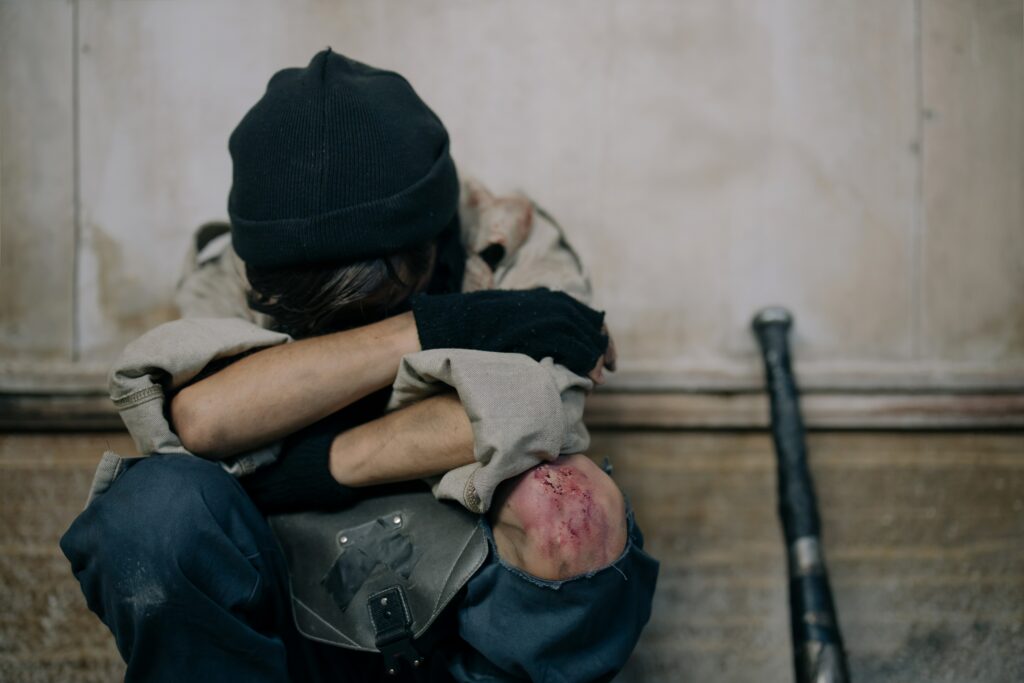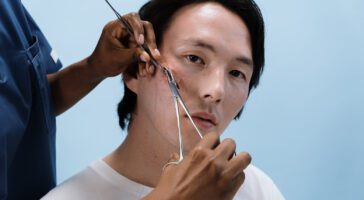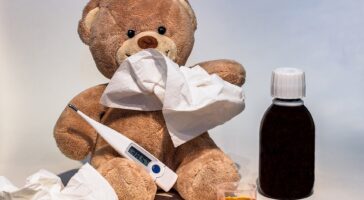Urgent Care
Diagnosis, treatment, and services for your everyday medical needs such as flu shots and lab work.
Feb 21, 2023

Kids are bound to injure themselves at some point or another. Sometimes it’s a broken bone after taking a hard fall, and other times it’s nothing more than a bruise while messing around with their friends. But every now and again a child can cut themselves and believe it to be “no big deal.” Usually, that is the case, unless the wound becomes infected. This is something a parent should keep a close eye on because when a cut or scrape becomes infected, it can lead to much more serious health problems that no parent wants for their child. Knowing the signs of an infected cut and how your child may act when having one is crucial so you can get it treated as quickly as possible before it gets worse.
Most people believe wounds are only caused by accidents, but the truth is anything that breaks the skin is considered to be a laceration because when the skin is broken, there is a risk of germs getting into the body and causing an infection. Skin is the body’s largest organ and helps protect it from bacteria, fungi, and viruses that live on its surface. Depending on the wound’s cleanness, depth, and size, will tell you how much care it needs.
Your healthcare provider will examine the wound and from there decide how they will go about treating it and the wound’s risk of infection. Clean wounds that aren’t contaminated with bacteria have the lowest risk of infection, making them much simpler to care for. Dirty or infected wounds, like an abscess, a deep scrape, or a cut, are a different story. These cuts need special treatment and monitoring to prevent infection. There are times when a wound is clean but there’s a risk of infection because of where it is located. Fluids and other contaminants may get into a wound that’s in an area with more bacteria such as the urinary tract, gastrointestinal system, or respiratory system. Dirt or a foreign object in the wound also can increase the risk of infection.
An infected wound typically gets worse instead of better. Any pain, redness, and swelling will usually increase in intensity making it obvious that the cut needs medical attention. In many ways, this is a good thing that the signs of infection are readily apparent. The first thing you should do with most small cuts and bruises is to apply first-aid. After doing this, monitor the wound for any of the following signs.
If the cut has scabbed over, but the scab keeps on growing, this could be a sign of infection underneath the top-layer skin.
Monitor the cut and speak to your child about what they are feeling. It’s important to make sure that the pain and swelling don’t keep increasing up to 48 hours after the initial injury.
If your child develops a headache or fever, you should take your little one to an urgent care facility for medical treatment. Rest assured, the experts at Chai Care will gladly help!
Most small to medium-sized wounds should heal within ten days. If this is not the case, visit your child’s healthcare provider for further examination.
Increased redness in the region is also a sign of infection. One of the most dangerous signs of infection is the presence of redness that appears to be tracing a path to your child’s heart. This must be treated as soon as possible.
Pay attention to discoloration, such as pus and fluid emerging from the wound.
When the wound is clean, your healthcare provider will close it by stitching the edges together in two separate layers. They will use dissolvable stitches to bring together the deeper layer of tissue under the skin. Then they will staple, tape, or stitch the skin over it. It’s important to note that healthcare experts don’t always close a wound right away. If there’s a chance a wound is contaminated, they will leave it open to clean it out, let’s say in the case that the wound is due to an animal bite. Closing an infected cut can trap bacteria inside which would lead to infection. When they’re sure no bacteria or other impurities remain, they will stitch or close the wound.
Sometimes, it’s best not to sew up a wound at all. If someone has lost a lot of tissues, it’s often beneficial to leave the wound open to heal through natural scar formation. Your child’s provider will also ask about their tetanus vaccine status, to make sure it’s up to date.
Before healing begins, the body gears up to defend itself against any infections. For the first couple of days, a wound may be swollen, red, and painful. This inflammation is a sign of the body’s immune system kicking in to protect the wound from infection. It is important to always keep the wound clean and dry to help the healing process. As the body does its self-healing, a scab begins to form over the wound on the outside. The scab’s job is to protect the wound as the damaged skin heals underneath. Underneath the scab’s defensive surface, new tissue begins to form.
Once the healing is finished, the scab dries up and falls off, leaving behind the repaired skin and a scar. The scar will be roughly 85% of the strength of normal skin and it will take a few months for the scar to be back to 100% strength of normal skin.
Serious wounds won’t heal overnight. It can take weeks for the body to build new tissue which makes at-home care important to prevent infection and minimize scarring. Make sure to keep the wound covered with a clean dressing until there’s no fluid draining from it. Your child’s healthcare provider will give you instructions on how to change the dressing and how often. It’s important to avoid getting the wound wet until further examination. Dirt in the water could seep into the wound and contaminate it. Also, there’s a risk that a wound might pull apart if it gets too wet. Lastly, make sure your son or daughter doesn’t pick or scratch the scab. A scab may itch as the skin underneath heals, but picking or scratching can rip the new skin underneath which will not only increase the healing time but will always make the scar worse.
The best way to help your child is to prevent an infection from ever happening. Any time your son or daughter gets a cut or scrap, the first step is to clean out the injury. Clean the wound with warm water for five minutes, then wash the surrounding area with soap. If there is still debris like glass or dirt in the wound, remove it, but be gentle and avoid pushing down so you don’t push it deeper into the cut. If you can’t remove all the debris or if you don’t feel comfortable trying to remove it yourself, go to an urgent care facility and the staff will do it for you.
Cuts and scrapes are extremely common among children which makes understanding the signs and symptoms of an infected wound so important. Even though infected wounds can have serious consequences, chances are the cut will heal itself on its own or your child’s healthcare provider will supply them with the proper treatment and medication, preventing a dangerous outcome. If the wound does not seem to be healing at home, take your little one to Chai Care and our trained experts will supply them with the care they need!
* Legal disclaimer: The content of this article and the entire Chai Care blog is for educational purposes only; it does NOT constitute medical advice and must not be considered as such. Please consult a medical professional regarding any symptoms or health concerns you or your loved ones.

Nobody wants to spend hours sitting in a crowded emergency room, especially when you or your loved ones…

In today’s fast-paced world, time is a precious commodity, especially when it comes to healthcare. At Chai Care,…

Healthcare is the cornerstone of a thriving society, and at Chai Care, we firmly believe that it should…

In the fast-paced world of urgent care, every moment counts. When patients walk through our doors at Chai…

Major or small, we can all think back to a time when we cut, scraped, or grazed ourselves.…

There is no other way of saying it, but we all poop. It’s something every person does and…

Broken bones are no joke. Injuries like breaks and fractures can have long-term effects if gone untreated and…

All kids get a fever at some point or another. This may sound like a bad thing, but…